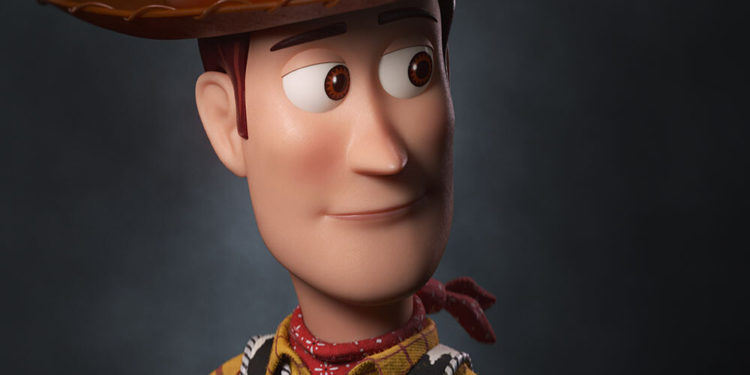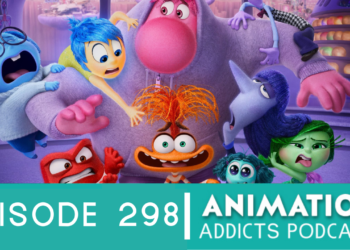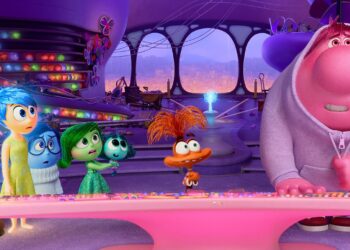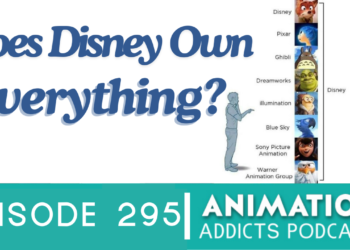Toy Story 4 swept the globe by storm earlier this year and recently arrived on home video. The film re-sparked a multitude of emotions and conversations in its audiences as love poured out once more for arguably Pixar’s most beloved franchise. Toy Story is special, not only for the milestones it represents as Pixar’s first feature and the world’s first full-length computer-animated film, but also for what its themes and characters mean to its now multiple generations of viewers. Among the most prominent of observable narratives is Woody’s, a character whose motivations, flaws, and changes become more complex with each passing Toy Story volume, whose arc is fascinating to study.
Many, myself included, questioned if Toy Story 4 was necessary when it was first announced in 2015. Toy Story 3, released in 2010, felt like such a perfect finale, and within the context of its predecessors, allowed the whole series to function as an admirable trilogy. In nearly every category, Toy Story 3 feels inherently like a bookend. Its opening fantasy sequence calls back the opening of Toy Story with Andy’s playtime. Its final shot (the iconic blue sky and fluffy clouds) is the first film’s first shot. It has the cinematic mechanics of a perfect ending. If Toy Story 4 was going to prove itself worthy, it needed to do that same legwork. As we’re about to explore, it does.
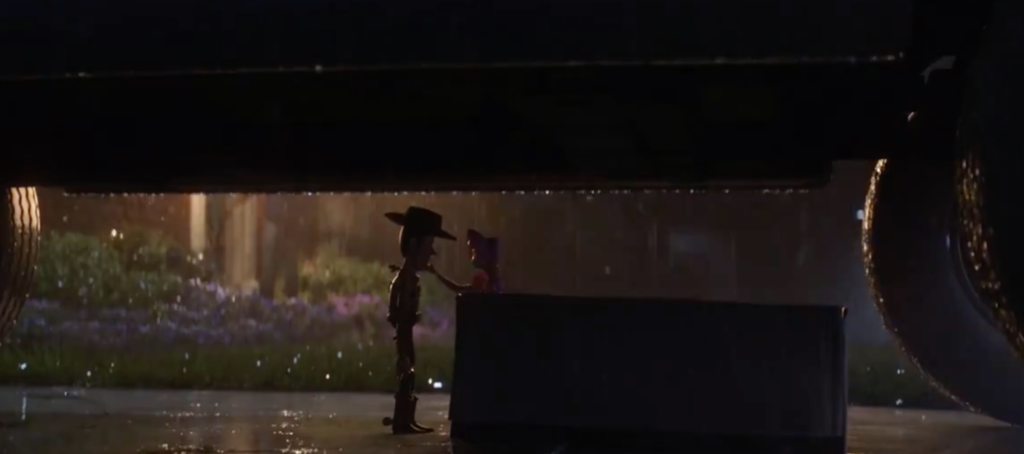
The Golden Rule of Pixar Sequels
Pixar’s justification for sequels is relayed in Charles Solomon’s book The Toy Story Films: An Animated Journey (published in 2012, before Toy Story 4 was conceived). Solomon shares how Pixar filmmakers always want a sequel to feel as if it’s truly the next chapter of a bigger story that the animators were trying to tell all along. A Pixar sequel should feel as if the story of the series is mapped out from the beginning, even though it isn’t.
That goal works a charm in Toy Story 4 with a simple move from Toy Story 3 laying out a vital foundation for what was to follow, even if it didn’t realize it at the time. Bo Peep was excluded from Toy Story 3, with director Lee Unkrich sharing in the film’s bonus material that, as great of a character as she was, it didn’t make sense that she would still be in the picture after all those years. Firstly, she was a lamp fixture, not a toy, but more importantly, she never belonged to Andy. She always belonged to his sister, Molly, and it didn’t service the story for Andy to have kept her with his other toys as he grew up. Unkrich did state that one of his regrets of Toy Story 3 was not featuring Bo in the opening fantasy scene, though perhaps her exclusion here was unknowingly necessary for her re-introduction in Toy Story 4 to pack the punch that it does.
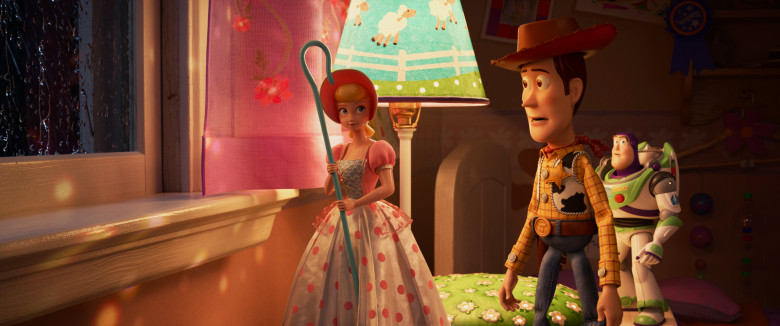
Upon seeing Toy Story 4 with a friend, he remarked, “Wow, they really planned all that out well. Not having Bo Peep in Toy Story 3 was so smart with what they wanted to do with her in Toy Story 4.” And therein I realized that Pixar had achieved its own gold standard: Toy Story 4 felt like a strategic chapter in a grander story, and therefore had to happen to complete the Toy Story narrative.
Getting back to Woody, though, the change that occurs through him in Toy Story 4 is reflected through language. It is the language more than anything that presents Toy Story 4 as the bookend to Toy Story, with two key phrases coming to have new meaning: “being there” and “lost toy.”
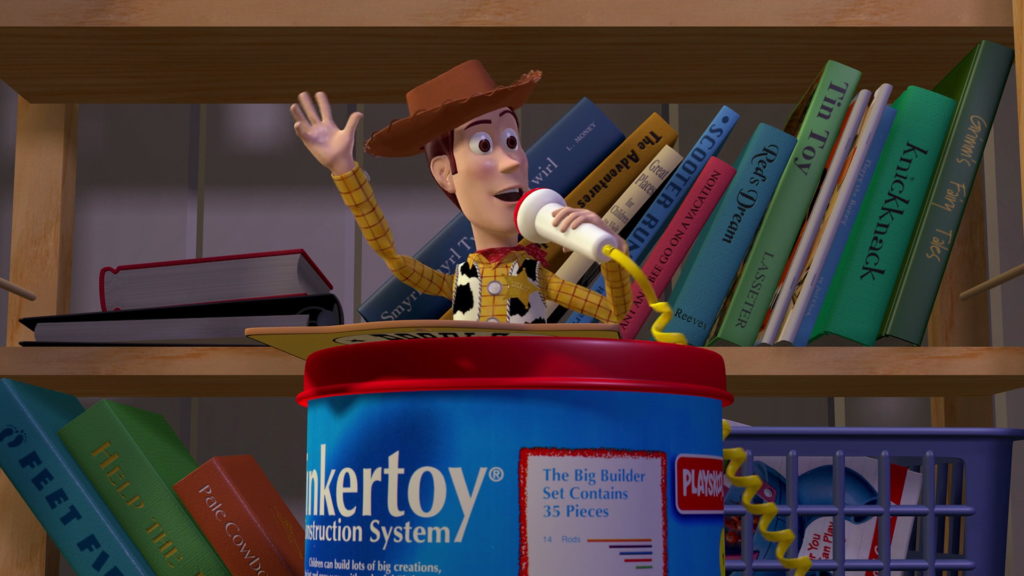
“Being There”
In Toy Story during the staff meeting, Woody declares that the toys’ job “isn’t about being played with, it’s about being there for Andy when he needs us.” More than anything, that’s Woody’s priority, and he longs for everyone else to prioritize that, too. There’s nothing wrong with that. That should be his priority during that stage of his life. He’s Andy’s toy. Therefore, his job is to be there for Andy.
Throughout Toy Story 2, this mantra remains the same. At the beginning of Toy Story 3, though, despite nearly a decade passing and Andy being a teenager about to leave for college, this is still Woody’s priority, with that same language being used. In a similar staff meeting (albeit with much less toys, now that Andy is older), Woody echoes, “This job isn’t about being played with, it’s about—” “—Being there for Andy. We know.” Jessie interrupts him, clearly having heard this speech before. Woody, perhaps naively, still longs with everything inside of him to be there for Andy.
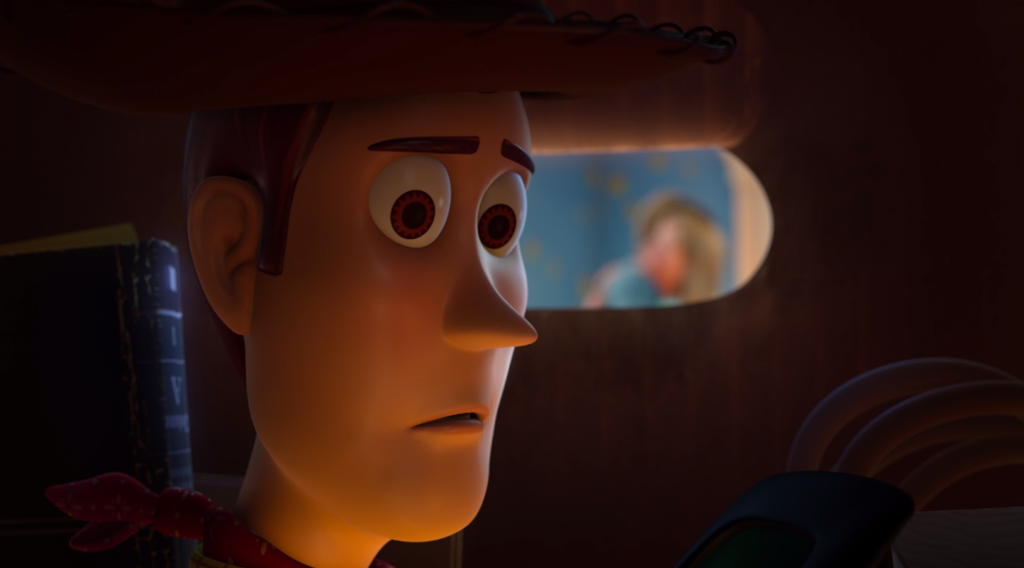
At the end of Toy Story 3, though, this phrase and that language comes to have completely new meaning for Woody, as scriptwriter Michael Arndt shares in the book The Art of Toy Story 3. Arndt takes us back to that moment: Woody inside Andy’s college box, ready to leave the other toys behind. As Andy prepares to say goodbye to his childhood bedroom, his mother steps into the room and becomes emotional at the sight of the room packed up and empty, the ghost of her son’s formative years vanished. Andy embraces her, and she implores, “I just wish I could always be with you.” Andy replies, “You will be.” In that instant, Woody makes a revelation. His entire purpose shifts. Andy’s mom will always “be there” for Andy, even if she’s not physically in the same space as him. And therefore, so can Woody. He doesn’t have to go to college with Andy to be there for Andy. This is what drives Woody to switch boxes and go to Bonnie’s with the rest of the toys. This life-changing choice is gloriously affirmed for Woody in a way he never thought possible: hearing it directly from Andy himself. As Andy gives Woody to Bonnie, he shares, “Woody has been my pal for as long as I can remember. He’s brave, like a cowboy should be. And kind and smart. But the thing that makes Woody special is he’ll never give up on you, ever. He’ll be there for you, no matter what.” Andy moves on. And therefore, so can Woody.
Or, so we think. From that point forward, Woody’s purpose changes, as he states to Forky in Toy Story 4: his job is to “be there for Bonnie.” However, his change of ownership is still something Woody is getting used to. He hasn’t quite moved on from Andy, even slipping in his explanation to Forky by using Andy’s name first before correcting himself. Even though Woody made a huge decision, he’s having a hard time accepting the reality of change around him. This is understandable and even expected, given the strong connection Andy and Woody had.
Woody was there for Andy. Now it’s his job to be there for Bonnie. But does that make sense? This is the question Woody berates himself for even thinking. It’s all but blasphemy to his worldview to wonder if his loyalty to his kid is anything less than permanent. We’ll explore how he confronts that internal dialogue a bit later.
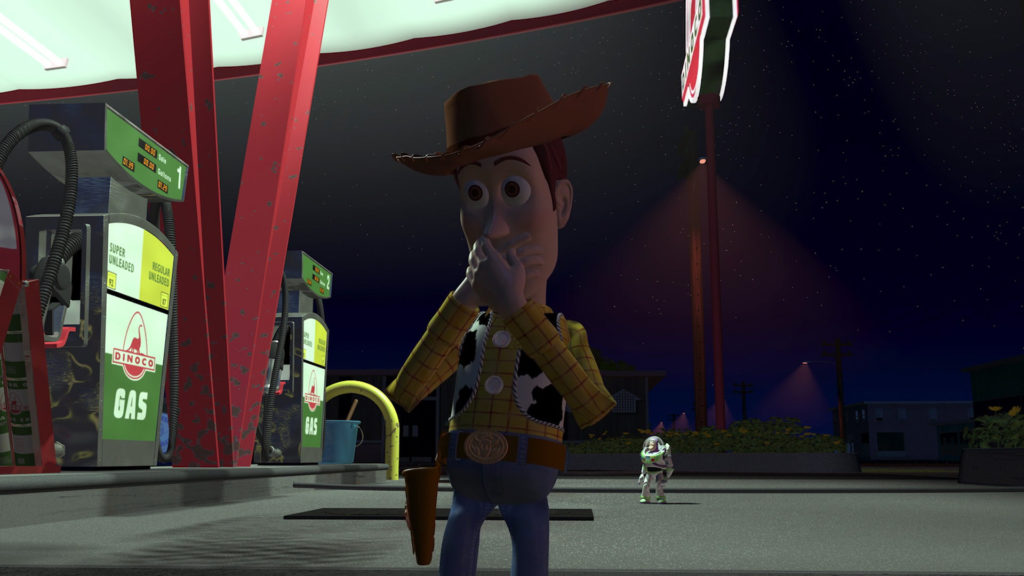
“Lost Toy”
The other consistent, repeated dialogue that gives us a lot of insight toward Woody’s arc is the idea of being a “lost toy.” Beginning in Toy Story and continuing forward, this is the language used to describe a toy misplaced by their owner, and thus doomed to an eternity of unfulfilled purpose, of empty desire. As Andy’s mom drives away from the gas station and Woody and Buzz are left at the pump, Woody cries in despair, “I’m lost! Oh, I’m a lost toy!” This is his greatest fear. This is his nightmare realized.
In Toy Story 4, though, this concept is turned on its head. Bo Peep shows Woody a very different perspective of the idea of a lost toy. For her, being a lost toy is not a woeful product of circumstance, it’s a choice she’s made — and that she’s proud of.
Bo Peep learned that her purpose wasn’t as narrow of a concept as she once believed. As “The Nerdwriter” observed in a recent YouTube video, even Toy Story 4‘s cinematography tries to send us messages about Woody’s worldview in contrast to Bo’s newfound perspective. In back-to-back cuts within the same scene, an angle focusing on Bo Peep has a bokeh, blurred background, while the same moment angled toward Woody has a stark, in-focus background, symbolizing her openness to organic decisions and embracing change as opposed to his more plan-oriented, rigid mindset at that point in the story.
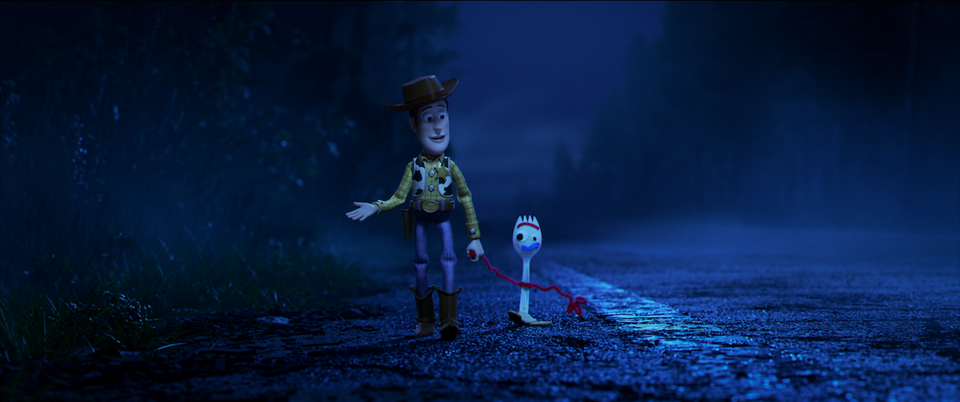
That’s not to say that Woody is completely static in the first three films. In many ways, he’s changed quite a lot. He’s grown. For starters, in Toy Story he does everything in his power to be his kid’s favorite toy at all costs, even if it means throwing a new favorite toy out of a window. In Toy Story 4, he does everything to protect his kid’s new favorite toy, even if it’s not him and even if it means throwing himself out of a window. Woody has learned to be selfless. He doesn’t get it right all the time, but his primary motivation is meeting the needs of others rather than himself. That will be key later.
In Toy Story 4, Woody feels a pull (a call, some might even say) toward something different, but because this contradicts so fundamentally with everything he’s believed for his entire life, he has difficulty 1.) acknowledging that the thought is something he even has, and 2.) moving forward toward taking action on it.
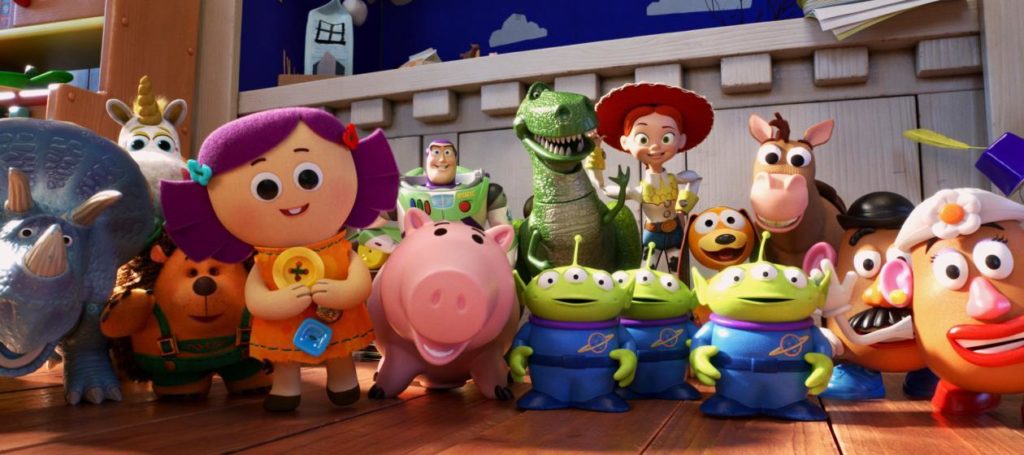
Woody Leaves
Ultimately, Woody decides to leave Bonnie’s toys — his family — to be with Bo Peep and help carnival toys get adopted by kids… In essence, to be a lost toy. What was once his greatest crisis is where he finds his fulfilled purpose. That purpose has transitioned from “being there for Andy” to “being there for his kid” to finally “being there for all kids.” This fluidity of his life’s pursuit shows tremendous growth in Woody as an individual and as a character in a way that is instantly applicable in considering what each of us devotes our lives toward achieving.
It’s easy to disqualify Woody’s decision. It’s understandable and even logical to at first claim it’s unwise. Leaving a child to live a life of your own was villainized in Toy Story 2. Wasn’t the point of that movie was Woody learned NOT to run away from his kid? Woody was pitted as unreasonable when he wanted to leave the other toys to go to college in Toy Story 3. Wasn’t the take-away there, as sung in the Oscar-winning end-credits song, that “we belong together”?
The difference in those circumstances, though, is that in both cases Woody would’ve been running toward an empty life by abandoning his kid. The museum in Japan. A box in Andy’s dorm room. The common factor in both scenarios is an earnestness to choose the path that leads toward meeting someone else’s needs vs. satisfying his own. As much as Woody might wish Bonnie needed him, she simply doesn’t anymore. She’s all but discarded him. Lotso hints at it toward the climax of Toy Story 3 and Forky brings it to the forefront in Toy Story 4: truth is in the eye of the beholder, and that means toys and trash might be interchangeable depending on which judge is making the verdict. To Bonnie, Woody has, sadly, become trash. Staying with her serves no purpose. It would be selfish in comparison to the opportunity of his other decision.

Here’s where we surprisingly find immense value in a place I’d never expect it to be: the Toy Story short films and television specials released 2011-2014. This collection of short-form content brought us some fun diversions in the moment, but ultimately didn’t change anything major within the Toy Story universe. Now, though, this extra media shows us something very important: Bonnie, once, truly loved Woody. This is fascinating.
If we pay close attention to the seasons within these mini-sequels, we notice two separate winter breaks for Bonnie. If Toy Story 3 concluded at the beginning of a school year, there are two winters during the shorts, and Toy Story 4 begins at the advent of another new school year, we can assume that the time elapsed between Toy Story 3 and Toy Story 4 is at least two years, at a minimum. This puts some longevity on what, to a viewer watching just the feature films consecutively, might seem to be hardly any passage of time.
What’s more, if the viewer makes the jump from Toy Story 3 immediately into Toy Story 4, Woody isn’t really shown as being loved by Bonnie. Sure, we get the sequence when she inadvertently takes him home from Sunnyside for playtime in Toy Story 3, but that was before we knew he would be her toy at the end. Yes, she plays with him briefly in the opening montage of Toy Story 4, but quickly in the next scene she chooses to leave him in her closet.
But in the shorts and TV specials, we see her treating him as equal as any other toy. She brings him when she goes over to friends’ houses. She takes him on car trips. She loves him. It’s this love that’s absent if we skip quickly from Toy Story 3 to Toy Story 4. If we don’t see that Bonnie once loved Woody, we think Bonnie completely devalued what Andy told her when he gave her Woody. If we don’t see that Bonnie once loved Woody, we think Woody’s torn decision to go with Bo or stay with Bonnie is based only on a misguided concept of loyalty rather than any substantial relationship.
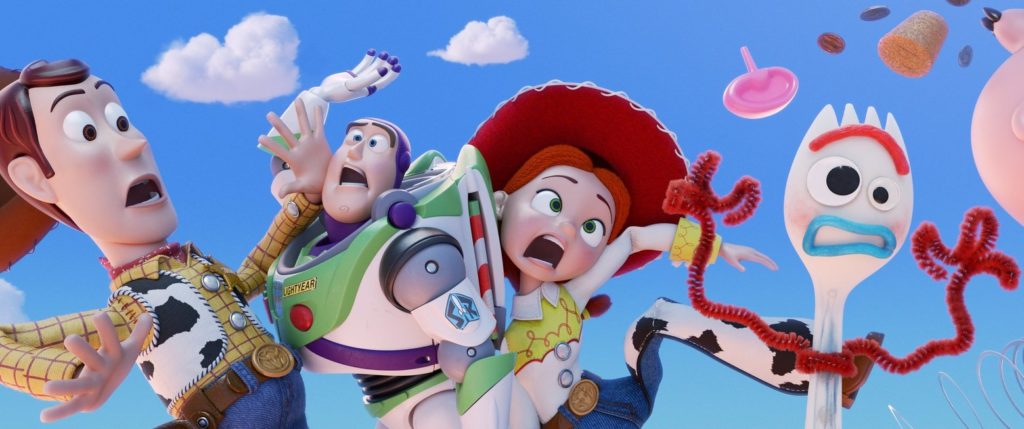
So Woody leaves. Finally, after years of processing who he is, why he’s here, and where he belongs in this world, he acknowledges and accepts something he’s never been able to before: that the answers to those questions change as time passes. There isn’t one concrete definition for who a person is. Life is more fluid than that. And having made his decision and said goodbye to the toys who have been his family for decades, Woody moves on. As Bonnie’s family’s RV pulls away and Buzz and Woody share one last look, a familiar riff of music inhabits Randy Newman’s score — the exact same cue that played when Woody appeared onscreen for the very first time in 1995. It seems this is a bookend, after all.


